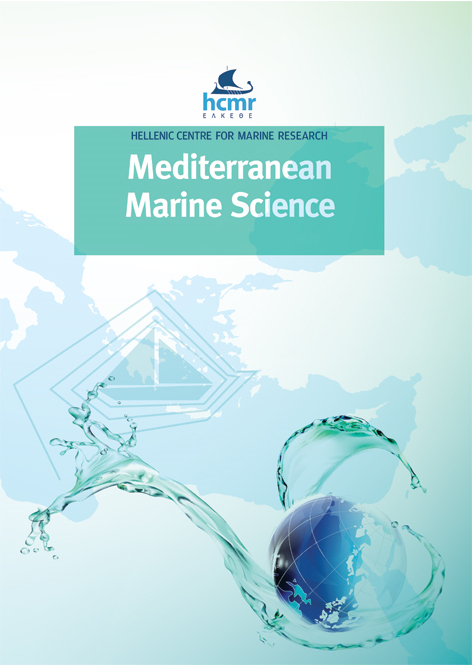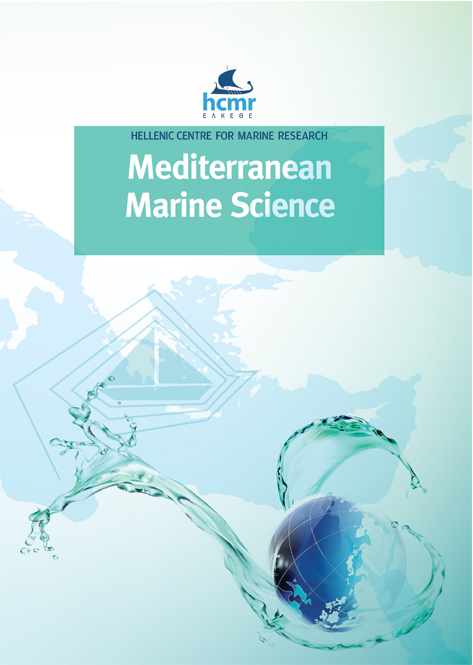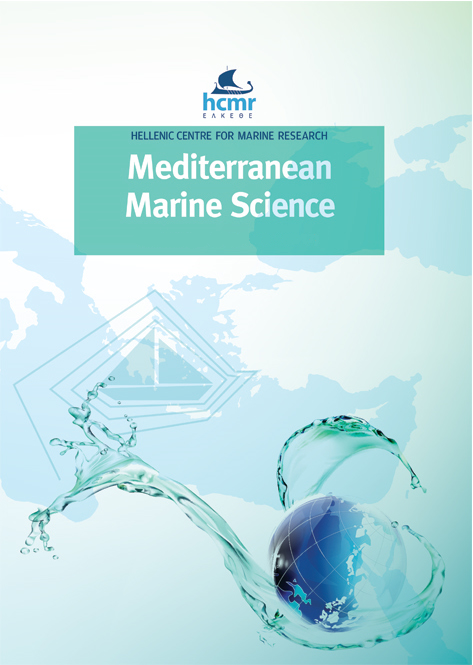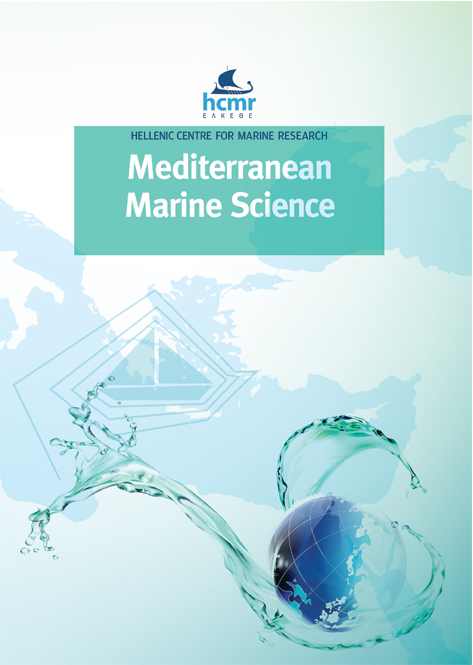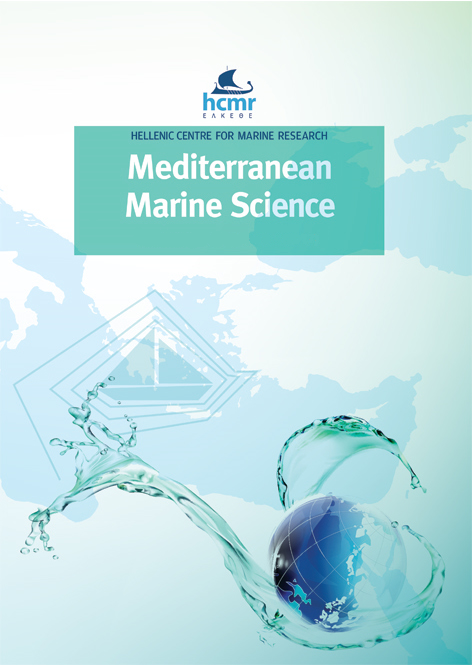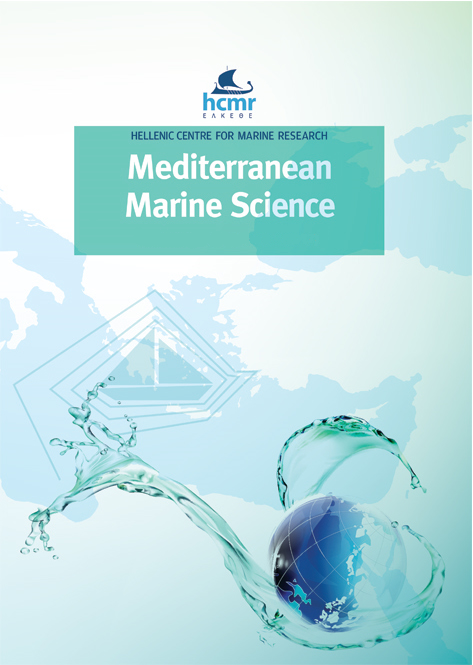The demersal fish assemblages of the infra and circalittoral coastal rocky bottoms of the Aeolian Archipelago (Central Mediterranean Sea) studied by Remotely Operated Vehicle (ROV)
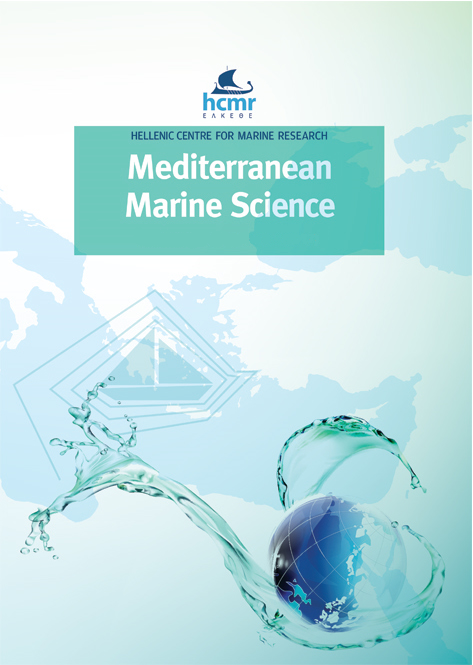
Περίληψη
Demersal fish assemblages on the rocky bottoms of the Aeolian Archipelago were investigated using a Remotely Operated Vehicle (ROV) within the framework of research activities aimed at drawing up the zoning proposal for a new Italian national marine protected area. Visual assessments were conducted around the seven main islands by means of 36 ROV transects. The video material was divided into 3 parts belonging to 3 Archipelago sectors (Western, Central and Eastern) and into 3 depth ranges (20-50, 51-120, 121-190). Thirty taxa of teleosts (29 species and 1 genus) belonging to 16 families were recorded. The assemblages were
numerically dominated by some schooling fishes, such as Anthias anthias, Callanthias ruber and Chromis chromis that exhibited a
depth-related partitioning of space, and three non-gregarious species, namely Serranus cabrilla, Coris julis and Lappanella fasciata.
In terms of species composition, the assemblages observed in the sectors of the Archipelago largely overlapped. No significant sector-related differences were detected in fish species richness, diversity and total density. Species composition and the investigated assemblage parameters were significantly affected by depth. The pattern of variation in species richness among depth ranges
differed from one archipelago sector to another. No significant interaction between the depth range and sector factors was observed in terms of species diversity and total density. Diversity values at 20-50 and 121-190 m depth were similar and significantly higher than at 51-120 m depth. Fish total density showed a clear downward trend with increasing depth, although significant differences were detected between the 20-50 and 51-120 depth layers and the deepest one. Overall, the demersal fish assemblage of the Aeolian Archipelago was poorly diversified and depleted, most likely due to overfishing. This information highlights the importance
of adopting specific measures aimed at the recovery of overexploited resources and the restoration of entire marine ecosystems.
Λεπτομέρειες άρθρου
- Πώς να δημιουργήσετε Αναφορές
-
CONSALVO, I., La MESA, G., CANESE, S., GIUSTI, M., SALVATI, E., LOIA, M., & TUNESI, L. (2021). The demersal fish assemblages of the infra and circalittoral coastal rocky bottoms of the Aeolian Archipelago (Central Mediterranean Sea) studied by Remotely Operated Vehicle (ROV). Mediterranean Marine Science, 22(1), 27–39. https://doi.org/10.12681/mms.23297
- Τεύχος
- Τόμ. 22 Αρ. 1 (2021)
- Ενότητα
- Research Article
Authors who publish with this journal agree to the following terms:
- Authors retain copyright and grant the journal right of first publication with the work simultaneously licensed under a Creative Commons Attribution Non-Commercial License that allows others to share the work with an acknowledgement of the work's authorship and initial publication in this journal.
- Authors are able to enter into separate, additional contractual arrangements for the non-exclusive distribution of the journal's published version of the work (e.g. post it to an institutional repository or publish it in a book), with an acknowledgement of its initial publication in this journal.
- Authors are permitted and encouraged to post their work online (preferably in institutional repositories or on their website) prior to and during the submission process, as it can lead to productive exchanges, as well as earlier and greater citation of published work (See The Effect of Open Access).





